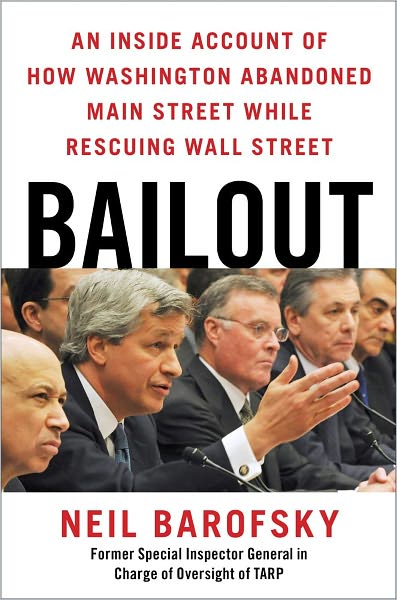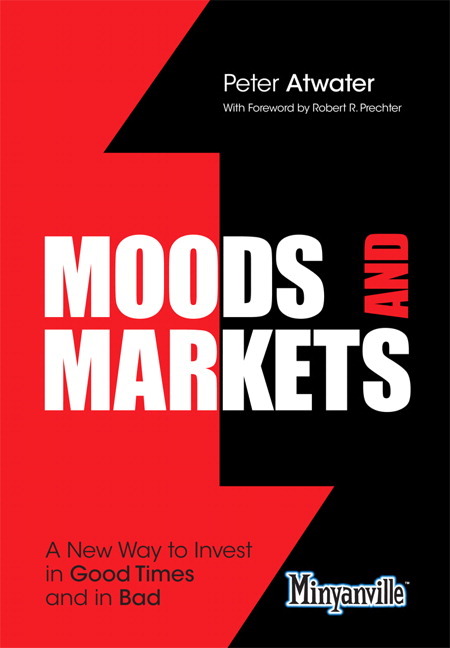
What does Washington, DC care about more — people or corporations?? Do you have to ask? DC favors corporations, and all three branches of the government support this.? Both parties favor this.? Why is this so?
The corporations, and those that own them are a more effective means of raising funds to maintain their hold on the offices that the occupy.? Beyond that, there is an attitude that economic policy needs to be carried out through laws that address corporations.
So whether you come from the t-party, Occupy, or someplace else, you might harbor resentment against the status quo: big government in league with big corporations, and wealthy people.
I wish it weren’t so, but the Constitution takes a back seat to “pragmatic” concerns, especially when a “crisis” happens. It should not be that way, but that’s the way it is.
So, what if you drop an idealistic guy, the author, Neil Barofsky, into the job of watchdog for the TARP?? [SIGTARP: Special Inspector General of the Troubled Asset Relief Program] He objects to the uncontrolled nature of how money is being handed out to banks, with few checks as to how the money will be used.
Now, the author could have made a stronger argument.? The FDIC, where does it pump in cash to failed institutions? They protect depositors — that’s the lowest level of the capital structure.? But where did the TARP add capital?? At the highest level of the capital structure; they bought stock and warrants.
Constitutionally, the government has no authority to own corporations.? Further, even if the government had that authority, if it was trying to preserve the soundness of the banking system, the proper way to do it would be to make senior secured loans.? That would guarantee the banking system, but let the common and preferred stockholders, and bondholders go broke before the taxpayer coughs up the first dime.
As it was, the author found himself adrift in DC, cleverly fighting to bring some rules to what was a giveaway to the banks, many of which did not need the bailout, and certainly did not want the limits on executive pay.? He found that DC was a place where the bureaucratic government fights itself.? No one wants to look lazy or foolish, so when someone alleges a crime against a party that another branch of the bureaucracy is supposedly investigating, they fight back.? Applying the principles of Peter Drucker, our government could be smaller, and more effective — there would be fewer turf wars.
Were the Bailouts Wrong?? Did they Fail??
The author makes the case that the bailout has failed. When he says that he is not saying that the bailout as a whole lost money. (I would note that the bailouts have lost money on the home if you include Fannie and Freddie, the auto companies, along with all of the financial institutions including AIG.) He is saying that the problem of too big to fail banks has not only not been solved, is actually gotten worse since the crisis. The big five banks now have around 50% of the deposit base in US. “Too big to fail” is a problem unsolved that still threatens our financial system. This problem is solvable; the US government broke up AT&T (then allowed it to recombine again). Interstate branching could be limited, or ended.
The second problem with bailout is that engenders moral hazard. Because you have done it once, it would be expected next time, which when the financial system once again enters a bull cycle, the bankers will know that the federal government has its back and will not be inclined to limit risk to the same degree that they otherwise might.
The third problem with the bailout is that it was uneven. A logical question for any person harmed by the crisis is, “Where’s my bailout?” Even if bailing out the banks in order to preserve financial systemic integrity was needed, there were other ways to do it, such as being lender of last resort at a penalty rate, or giving vouchers good to reduce debts to every household in America. Particularly that last option would have been viewed as fair by the American people. That could have saved some of the pain felt by those with mortgages, and help the creditworthiness of loans at the banks. Instead, the Obama administration created programs like HAMP, which did little good for most, and actually harmed some.
The fourth problem with bailout and monetary policy that accompanied it was that it was a large transfer of wealth savers to banks. It doesn’t do much for the economy, if the banks have zero cost on their deposits, and all they do is invest in ultrasafe securities, clipping a small, but safe profit.
What was it Like to be There?
More often than not, the Treasury Department did not want to have the Special Inspector General interfering with their plans.? There was a lot of stonewalling, and nondisclosure of pertinent data.? It got fairly contentious at times, and often required members of Congress to intervene on behalf of SIGTARP.? The relationship probably got worse over time, because those working at SIGTARP knew that they would have no influence, no changes would be made, unless they convinced the media that something was wrong, and thus prodded Congress to push for change at Treasury.? The worst that that could happen would be that the President would fire the Special Inspector General, and appoint a new one.
Another part of challenge was realizing the need to build a talented team of lawyers, analysts, PR professionals, etc., to do the work analyzing how TARP funds were being spent, and write reports that would grab attention, and change the terms of the political debate.
That challenge was made more difficult by a lack of adequate facilities.? The initial staff was relegated to some pretty poor accommodations at the Treasury building.? I met with the SIGTARP staff over the AIG bailout in June of 2010 over a paper that I wrote that exposed aspects of the weakness at the domestic insurance subsidiaries.? (For Amazon readers, there is a link to my report at my blog.)? The accommodations that they had were some of the poorest I ran into in DC.
I know from personal experience that the US Treasury was sensitive to any criticism of the TARP.? At the first blogger summit at the Treasury, the officials were prickly over any questioning on the topic.? It did not help that GMAC got another dollop of cash that morning.? (links here, and here)
There were some ugly controversies.? One of the SIGTARP reports noted that if every potential program had been fully tapped the US would have expended $23.7 Trillion.? The report caveated that figure heavily, but it was seized upon by Republicans for partisan advantage.? They took a lot of flak for totaling figures that were in some sense apples and oranges.
On page 190, the question from Democrat Stephen Lynch to Tim Geithner, ?Why didn?t he try harder to cut a better bargain for the American people?? was never answered by Geithner.? Truth, Treasury was making it up as they went, with counsel from money managers and banks, which left the US Treasury vulnerable to those more technically proficient at finance who had at least some degree of conflicts of interest.
One more limitation of SIGTARP, they had no ability to bring cases ? they had to convince the Department of Justice or another prosecutor to take action.? That brought another level of negotiation and bureaucratic infighting.
The end came for the author after he realized that the TARP was winding down, and he was tiring of the Washington scene, and the corrosive effect it was having on his own character.
That leaves me with one closing question: What good did the author and his team do?? In one sense, not a lot.? The current financial regulatory environment post-Dodd-Frank continues business as usual with a more complex bureaucracy, with likely more infighting between competing regulators.? My view is when many are responsible, no one is responsible? that is certainly not the fault of SIGTARP, but we are probably in a worse regulatory environment than prior to the crisis.
That said, SIGTARP gathered data on the TARP, which led to a decent number of small and medium-sized fraud cases, and constrained the open-handed nature of the US Treasury toward financial companies, which could have result in a lot more fraud, and/or higher costs to the taxpayer.
Quibbles
Small mistake on page 173, where the author mentions PNC acquiring City National Bank instead of National City Bank.
The book reads a little disjointedly.? It is mostly chronological, but topical by chapter, so sometimes it feels like two steps forward, one step back as far as the time flow goes.
Who would benefit from this book:??This book will benefit anyone who wants a first person account of what it was like to be the Special Inspector General of the TARP.? It is also for those who want to see how dysfunctional politics can be in DC, and how resistant the Treasury Department was to any limits on their autonomy.? Finally, it shows how difficult it is for anyone to change the system in DC.? The author survived in DC for 2+ years as a change agent; that?s difficult enough, but he is gone now, though SIGTARP soldiers on.?? If you want to, you can buy it here: Bailout: An Inside Account of How Washington Abandoned Main Street While Rescuing Wall Street.
Full disclosure:?I asked the author to send me data on his PR flack, who I asked to send the book to me.
If you enter Amazon through my site, and you buy anything, I get a small commission.? This is my main source of blog revenue.? I prefer this to a ?tip jar? because I want you to get something you want, rather than merely giving me a tip.? Book reviews take time, particularly with the reading, which most book reviewers don?t do in full, and I typically do. (When I don?t, I mention that I scanned the book.? Also, I never use the data that the PR flacks send out.)
Most people buying at Amazon do not enter via a referring website.? Thus Amazon builds an extra 1-3% into the prices to all buyers to compensate for the commissions given to the minority that come through referring sites.? Whether you buy at Amazon directly or enter via my site, your prices don?t change.











